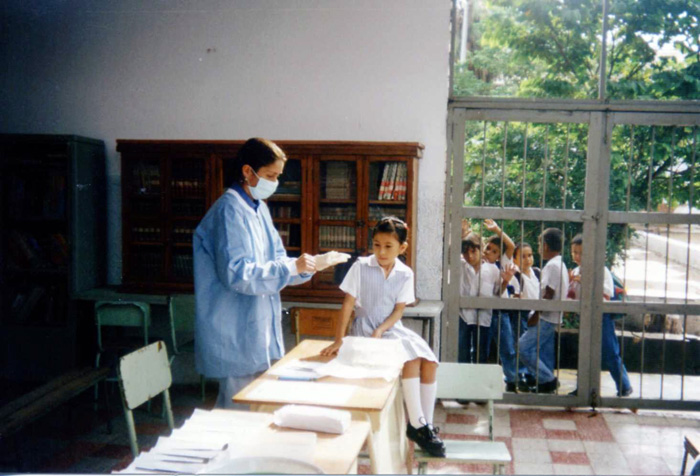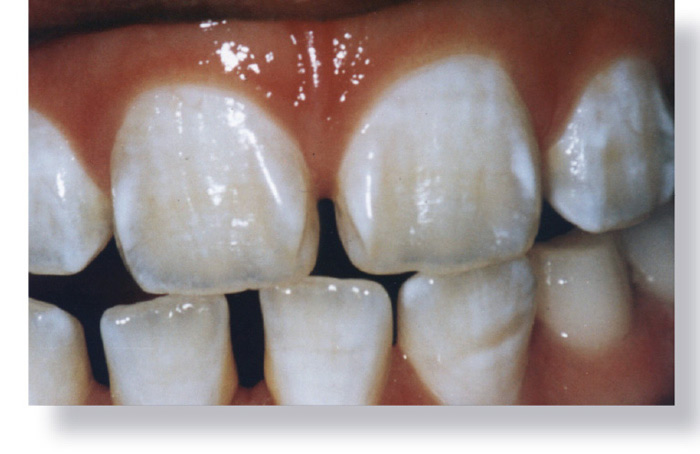In Colombia, where 11 percent of the population is affected by this problem, there are at least ten different towns from different areas in the country, where the fluorine concentrations are very high. On the list we find Rivera (Huila), Tocaima and Nilo (Cundinamarca), some areas in Chocó and some towns in Antioquia.
A Rising Problem
The curiosity of Carolina Gómez, student of the Faculty of Dentistry at the Universidad Nacional de Colombia, who visited with regularity Agua de Dios (Cundinamarca), prompted her to examine some sort of visible spots on the teeth of the inhabitants of this municipality. Together with Martha Calle (dentist) and her research partner, Liliana Patiño, they reached a more accurate diagnosis.
"From the beginning, we noticed that almost every children that we approached randomly on the street in order to check their teeth, had spots, sometimes white, sometimes brown," recalls Calle, dentist and professor at the Universidad Nacional de Colombia.
With the help of an epidemiologist, they started an oral morbidity study within the school population of the municipality. The results showed that a 100 percent of the examined children (124 students between 7 and 14 years old, from all the rural and urban schools) had spots.
"At that moment, we didn"t rush to conclude that it was fluorosis, because we had not completed water tests, we only wanted to complete a epidemiologic census that would allows us to establish the extent of the problem," explained the dentist.
Then, they completed, together with Professor Edgar Delgado, from the Department of Chemistry at the Universidad Nacional de Colombia, an additional study. They took water samples and samples of stained teeth extracted for therapeutic reasons, which were donated by patients from the Agua de Dios Health Center.
"We analyzed the samples and established that the inhabitants from the municipality suffered from fluorosis. In order to understand the reason of those results we had to live several days with the population," said Professor Calle.
People from this municipality consume water from an affluent called Los Chorros. "Its water is sulfured and the natural concentration of fluorine is 1ppm (part per million). However, the test completed on children showed a different result: the fluorine concentration in the urine was higher, in several cases, than 5 ppm.
"All kinds of food, soup, rice, bread, soft drinks, etc., contain the same water, which is also drunk on daily basis. Even though this water is usually boiled, instead of evaporating, fluorine concentrates," explained Professor Delgado.
The researchers found accumulated fluorine in the children"s urine. Adding the soup, the rice, the Aguadepanela (sweet beverage), researchers found the reason for the high concentrations of this element.
World Campaign to Control Fluorine
According to Professor Delgado, the main problem is the indiscriminate way in which fluorine is being administrated.
"This substance should be handled the same way as any other medicine. For instance, when you go to the doctor, you are not prescribed with an antibiotic in the waiting room. First, the physician has to verify that you need it. Today dentist, particularly with children, take a cotton swab with a fluorine solution at high concentrations (10 ppm) and pass it on teeth, without checking previously if the patient really needs it," argued the researcher.
For this reason, he criticizes the fact that fluorine gets added to water and other products, and affirms that, aware of this fact, countries of the European Union already prohibited water with fluorine.
Fluorine intoxication is not only an esthetic problem, but a mechanical one, since after some time the teeth start to crumble.
 Correo Electrónico
Correo Electrónico
 DNINFOA - SIA
DNINFOA - SIA
 Bibliotecas
Bibliotecas
 Convocatorias
Convocatorias
 Identidad UNAL
Identidad UNAL




